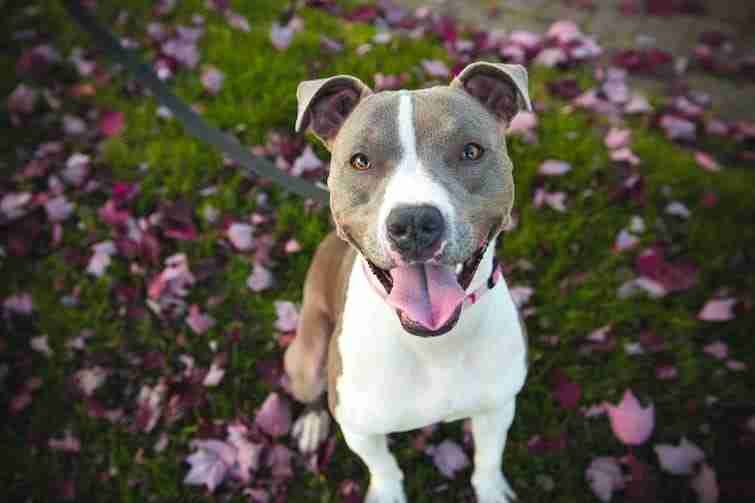As a pet owner, you should give them enough time to bond. But what if you have a hectic working schedule? For sure, you are worried about how many hours it will take for your dogs to be at your home alone. In that case, you might be wondering about how long can a dog go without peeing.
If you are a dog owner who has a pup and wants to know how many hours can a dog hold its pee, you are in the right place. This post will talk about the possible factors that you should keep in mind to create the safest and best decisions for your pups.
It is essential to talk about the topic of bathroom needs, especially when it comes to your dogs being left alone in your home. Even though dogs are known to hold their pees for longer hours, you should determine how long is too long for them.
Most dog owners don’t consider the hours that their dogs hold their pee. If you tend to experience ‘pee’ accidents every time you come home from work, this post will help you to have a thorough understanding of the bathroom needs of your pooches. This will help you to choose the proper way to support their urinary health.
Factors That Can Affect The Frequency of Dog’s Bathroom Breaks

A few factors (including psychological factors) could affect how long your furry friends can hold their bladder. These include their diet, health, size, and age. Aside from that, you also need to understand the bathroom needs of your canine.
When making routines and strategies always to meet your dog’s bathroom needs, you should remember the essence of having the proper bathroom routine and possible health problems that your sick dog might have.
Diet
The urinary health of your dogs is usually affected by the type of foods you are feeding them. To keep the frequency and amount of their pee at a minimum, you should not always feed them with wet, raw, and other moisture-rich foods. Keeping them hydrated is important.
But there are also benefits that your puppies tend to get from consuming moisture-rich foods. This does not only aid digestion but also flushes out the bacteria and toxins inside their body. The only problem with eating this kind of food is that your canine may have frequent visits to the bathroom.
On the other hand, large breeds who consume dry foods, such as kibble, may not need to visit bathrooms often. But this does not guarantee that their body is healthy.
The color of human’s pee and dogs are the same. If you notice that your furry friend urinates dark yellow pee, it could be an indication of dehydration. On the other hand, if you found that your puppy’s pee is dark, vets would recommend you to increase their moisture levels, using raw bones, wet food, broth, or just water.
Health
A dog could also develop health conditions that could affect the frequency of its pee. Some of these health issues include weight problems, diabetes, kidney problems, and urinary tract issues.
On the one hand, the medicines your dogs are taking could also be a factor. Other medications may cause a diuretic effect that will encourage frequent urination.
If you are worried about your dogs urinating more frequently than normal, you should immediately take them to their veterinarians to treat the issue right away. Sometimes, frequent peeing could be an early indication of an underlying health problem that professionals should address.
Size
Another essential factor that can also affect how long your dogs can hold their pee is the dog’s size. Larger dogs have, of course, larger bladders compared to toy or small dog breeds. But it does not guarantee that all big dogs can hold their pee longer. But it is a great contributing factor to successful house and potty training.
Studies suggest that the dog’s pee is estimated according to their weight. For example, dogs can pee around 10 to 20 ml per body pound. This means that if your dog is 5 pounds, she can pee around 1/7 to 3.5 ounces per day. Although it is only a small amount, the big question will lye on how much pee their bladders can hold.
Remember, dogs are different. This only means that they have a unique bathroom habit. The 10 to 20 ml per pound is just our estimate. It means that your furry friend’s pee might exceed these approximate measurements. To ensure that they will not cause accidents inside your room, you should create a bathroom schedule that will suit their unique bathroom needs.
Age
One of the most popular aspects that could contribute to how long your pups can wait between every bathroom break is their age. Young pups, especially those who don’t yet undergo proper house training, can break their pees anytime compared to those well-trained, older dogs. Well, all these might be because of their underdeveloped and undersized urinary tract systems and bladders.
Well, it is just not all about their pee-holding capacity. Take note that it requires a long time for their muscles that release and hold the bladder to develop. This means that other puppies might need frequent visits to the bathroom more frequently. Developing these muscles and teaching your dog how to manage their urinary bladder are important parts of potty training.
Aside from young puppies, your senior furry friends can also lose their ability to control these muscles over time. Most adult dogs are more prone to mobility limitations, inflammation, liver and kidney failure, and weakening of the muscles. These will cause them to require more bathroom breaks and more frequent urination.
Who Urinates More Frequently Older Dogs or Younger Dogs?
For every pound of body weight, a healthy dog will produce 10 to 20 ml of urine per day. The majority of dogs can go 8 – 10 hours without urinating if they are healthy, but this is mostly determined by their age, gender, body size, and general health. Smaller and younger dogs need to urinate more frequently than larger, older ones. However, to go this long without urinating is unhealthy for dogs.
The following is a brief diagram that will give you an idea about how often you should take your dog to a bathroom according to their age.
| How Long Can a Dog Go Without Peeing? | |
|---|---|
| Puppies (approximately less than six months) | 1 to 3 hours |
| Puppies (approximately greater than six months) | 2 to 6 hours |
| Adult dogs (approximately less than seven years) | 6 to 8 hours |
| Senior dogs (approximately greater than seven years) | 4 to 6 hours |
| Senior dogs (approximately older than 12 years) | 2 to 4 hours |
An average older dog should pee at least five times daily, and that is around five to eight hours per day. Healthy adult dogs hold it for much more longer, but it is not recommended to force them to hold their urine for extended periods.
Why is a Proper Bathroom Routine Essential?

As we mentioned, other adult dog breeds could control their urine for longer than the younger pups. When needed, they can hold their pee for as long as 12 hours. For example, if you are outdoors and your dog is left alone in your home for quite some time, it is possible to manage their urine for longer hours. But, practicing it regularly could cause adverse effects on your dog’s good health.
The following are the possible risks of pushing your furry friend to hold their pee for long periods daily.
Incontinence – This is a common risk for aging pets that constantly hold their dog pee for several hours. But it could also happen to any dog breed despite their age. Pups holding their dog pees for a long time can lead to enlargement of their bladder, damaging its surrounding tissues and muscles. The effect of incontinence could be permanent. Thus you need to prevent it as early as possible.
Urinary Cancer – The urine is composed of carcinogens that could mix with the cells when it stays inside your dog’s bladder for a long time. Although this is not very common in most dogs, you must still consider it when creating pee breaks for your furry friend.
Urinary Tract Infections – Your dog’s urethra, bladder, and kidney are filled with toxins and bacteria that can be flushed by frequent urination. If you force your dog to hold their pee for longer hours, it will increase the population of these toxins in their urinary tracts. This could cause blockages and stone or crystal formation that could lead to a life-threatening situation. If you found that your dog is susceptible to urinary problems, you may consider using products that support their urinary health and alleviate bacterial growth.
If your pup usually experiences problems in terms of its peeing needs, then it is recommended to contact a professional veterinarian. Blood in the urine, leaking, peeing more frequently, restricting to pee, and not peeing at all are early signs of a more serious issue.
How Long Can Dogs Hold Pee Without Causing Bladder Problems?
Holding in urine may cause toxins to accumulate, weaken the bladder muscles, and more. When germs from the genitals spread to the bladder, dogs can get a bladder infection. Urinary stones can form if the urinary tract infection isn’t dealt with promptly, owing to a buildup of bacterias.
If your dog holds his urine for long periods, you should visit a local vet or seek medical help. Eliminating these health issues early can help avoid serious damage to your dog’s urinary system. Here is when choosing the best pet insurance can come into play.
Furthermore, leaving your dog home alone for long hours can increase the risk of bladder issues. Ask yourself, would your dog feel uncomfortable if you do not take him/her on constant potty breaks?
Be sure that you set up a proper bathroom schedule for your dog, taking into consideration a dog walker if needed. This will help them stay healthy and increase their physical activity on a daily basis.
Adult Dogs And Issues in Potty Training
If you are problematic with the frequent pee accidents caused by your dog in your house, you should first know the reason behind it. If this is your first time owning a pet, chances are you don’t have any idea on how to potty train them.
The best thing you can do is to work with a professional veterinarian who is more knowledgeable about the issue. On the other hand, if you find out that your dog is normal and healthy, then the cause might be behavioral. The following are the common potty training issues with your pups.
Marking
Unlike humans, larger breeds and smaller breeds might display territory marking. This could be an indication that your dogs caused an accident in your home. This issue is notable to unneutered males. The dog’s natural instincts are the main basis of territory marking. It is all about their ability to control. Usually, they show this habit if new persons or pets are introduced into the house that will threaten their position.
This problem can be fixed by treating your dog first. You can ask your vet whether he recommends dog neutering or spaying. Fixed canines that show marking might be experiencing anxiety. Thus, it is essential to keep them physically and mentally stimulated to relieve fear, anxiety, and stress.
Sudden Excitement Peeing
The excitement in peeing is very common among young adult dogs and puppies. This situation is commonly known as puppy piddles. Observe your dog if they pee right after seeing you enter the door. Well, this does not mean that they are unable to control their pee. It is also because they are so excited to see you.
This problem can be treated by just ignoring your pup for a few minutes. Before giving them the attention they want, you need to wait for them to be calmed. This practice requires consistency, patience, time, and effort. Luckily, most pups can outgrow this bad habit without training.
How to Balance Your Life and Maintain a Healthy Dog

If you have a hectic working schedule that forces you to leave your furry friend at home alone for more than eight hours daily, there are several ways to ensure that your pup’s urinary system is in good condition. Some of them are the following:
Indoor Bathroom – If your dog is free to roam around your home, it would be better to invest in an indoor potty system. This will allow your pups to relieve themselves anytime.
Pee Pads – If you have kennel-trained pups, pee pads help avoid pee accidents in your home.
Lunch Break Check-Up – This option is ideal for those dog owners living near their work setting. If possible, check your pooch during your free time and have a quick bonding time. Through this, you are effectively managing their bathroom needs while giving them attention after being left alone for some hours.
Take Them to Work – Of course, taking your dog is not the best option for all working fur parents. But if the management allows you, it is better to take your dog with you. Through this, you can keep an eye on your dog while working, and you don’t have to leave them alone for how many hours.
Conclusion
Healthy dogs can hold their pee for an average length of 12 hours. But the situation is different for young pups. Holding pee for too long is not recommended as it could lead to urinary health problems. That is why building a good bathroom schedule for your pooch is recommended.
Now that you understand how often should a dog urinate, you might want to schedule a few trips outside for your furry friend. Sending your dog to doggy daycare is a fantastic method to socialize them and provide them fresh air and activity. Hope you find this article helpful.
Last Updated on 16/03/2025 by Karen Snow
Hi! I’m Karen and a certified dog lover. As a freelance writer and blogger, I do my best to squeeze in some time with my dogs, learning more about the way they act and how I can make sure that they continue to stay well-cared for by yours truly.
My dogs have helped me through a lot, and this is my way of giving back to them! Besides animals, I also love to travel and cook, having explored my country’s restaurants and unique places. Follow me as I show you all the amazing tips and bits of information I learn along the way about our furry friends!
